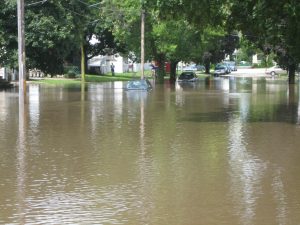BLOG
Flood-Proofing Your Home
by TRP Ready Mix on May 20, 2017
Three Ways Ottawa Could Use Concrete to Prevent Flooding Damage
After an exceptionally rainy month of April, Ottawa residents learned firsthand not only that flooding is a real concern, but also the devastating effects it can have. The record-breaking rainfall combined with melting snow contributed to floods that affected several areas within the city, damaging hundreds of homes and displacing many residents.
While the weather may not have been the norm, it doesn’t mean that it won’t happen again. The fact is the climate has changed since Ottawa’s storm water management systems were first designed and as a result, now more than ever, the government, residents, and other communities need to work together to prevent similar disasters from happening the future. While there is no one solution, here are a few ways you could use concrete to help flood-proof buildings and homes in Ottawa:
Flood walls
According to a report from Smart Prosperity Institute, some of the most impactful storm water management projects are those on privately owned land. If you own property along the water, installing a flood wall is one option to help protect your home or office. Concrete is a popular choice for flood walls in Ottawa because it is easier to seal, more resistant to flood damage and stronger than other conventional construction materials.
Dry flood-proofing
Dry flood-proofing means making a building as impermeable as possible up to a certain height, such as by using a sealant. Your dry flood proofing should not exceed three feet and is most appropriate for buildings with solid masonry or concrete walls.
Wet flood-proofing
Unlike dry flood-proofing, the aim of wet flood-proofing is not to stop the water from getting in, but rather to minimize potential damage. There are three main ways you can wet flood-proof your property:
- Allow water to easily enter and exit to minimize structural damage through openings such as vents or breakaway walls.
- Use water-resistant materials, like concrete, for flood prone areas such as flooring.
- Elevate important utilities.
Wet flood-proofing is a good option for those who are looking to retrofit an older, flood-prone building and it is typically less expensive than dry flood-proofing.
There are many ways that concrete can be used to help protect homes and buildings in Ottawa and elsewhere. While the flood of 2017 was certainly devastating to many businesses, homeowners, and families, it did help bring awareness to an important issue. By working together, the city and its residents can rebuild from this incident and mitigate future risks.

